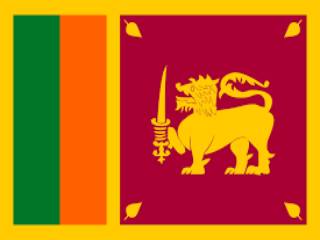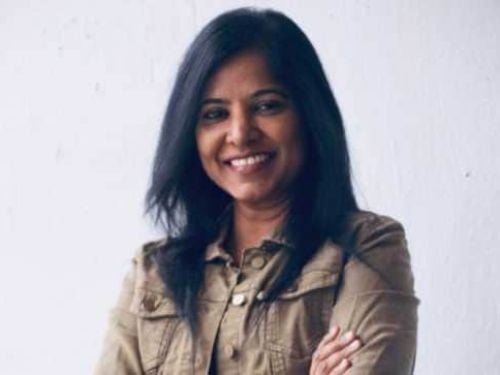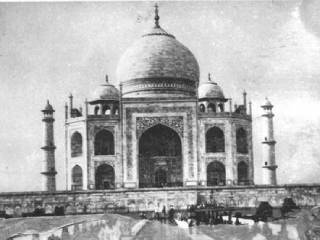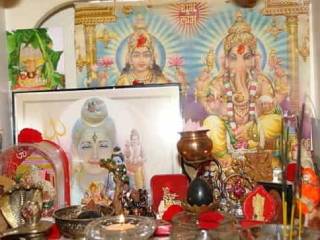The first all-granite Hindu temple to ever be built outside of India is slowly taking shape on the tiny Hawaiian island of Kauai.
It is a massive project � involving a village of craftsmen in Bangalore, a score of Hindu monks on Kauai and nearly 9,000 individual donors from 65 countries.
Two decades in the making, once completed, the Iravian temple will be the centrepiece of the 51-acre San Marga Sanctuary.
The sanctuary is already home to another temple to Shiva, a monastery and acres of landscaped tropical gardens visited by approximately 10,000 visitors each year.
The monastery complex is located on the banks of the Wailua River, in the shadow of the 5,200-ft Mount Waialeale, the highest point on the island. The location is sacred to native Hawaiians and said to be the site of one of seven ancient temples that descended from Waialeale to the Pacific Ocean.
Kauai is one of the most remote places in America. At just 553 square miles, it is sparsely inhabited by only 50,000 people. Nicknamed ‘the Garden Isle’ for its lush vegetation, it is popular with Hollywood and over 100 movies, including Jurassic Park, have been filmed on its beaches and forests.
While it is certainly an idyllic locale, Kauai is not the most obvious home for a Hindu order. Hawaii does not have many Hindus � there are just 20 Hindus living outside the monastery on Kauai, and on the most populous island, Oahu, only 600 of 1.5 million residents are Hindus.
�We see this temple as a gift of design, beauty and architecture from India to America,� says Paramacharya Palaniswami, one of the 22 monks in residence at Kauai’s Hindu monastery. �It is a bridge between cultures in a place where many people have not been to Asia.�
In 1970, the late Satguru Sivaya Subramuniyaswami, the preceptor of an order of all-male monks then located in California, visited Kauai and decided to relocate his order to the island.
The monks built a temple, named Kadavul for the Tamil name for God, and installed an ancient six-foot-tall bronze Shiva Nataraja. It was the first Shiva temple built in the west.
Then, in 1975, the Satguru had a three-part vision of a new temple. Over the next decade and half, the monks developed plans for Iravian. The design by renowned temple architect V Ganapati Sthapati, former prinicipal of the Government College of Architecture in Tamil Nadu, is in traditional South Indian chola style.
The ceiling is supported by 10 large pillars, each with 24 sculpted panels depicting Hindu practices and philosophy. The 35-foot cupola in the sanctum is made from a single seven-tonne stone carved by four men over three years. It is capped with 23 carat gold.
Each white granite stone is hand-quarried and carved using traditional techniques in Bangalore by a team of 72 artisans before being shipped 10,000 miles to Kauai. Already, some 3.5 million pounds of stones � that’s 80 shipping containers � have made the journey from India to Hawaii.
Once they reach the site, a team of eight carvers assemble the pieces and provide finishing touches. Carving is approximately 90 per cent complete as is over half the work necessary in Kauai. Construction is expected to be finished by 2014, over two decades after the first stone was ceremonially chipped by Satguru Subramuniyaswami in December 1990.
According to Palaniswami, this remote island location allows the monks the freedom to be high-minded. The monks adhere to a traditional ascetic schedule that involves several hours of mediation and service beginning each morning at 4 am. But the monastery is well connected to the world thanks to modern technology. The order publishes a quarterly magazine, Hinduism Today, serves as a media resource on Hinduism for many American publications and the monks even have wireless internet.
However, the new temple is being built with traditional and very basic technology, the most common used tools are chisels and hammers. Satguru Subramuniyaswami believed that rock is a living element and using dynamite and power tools damaged the stone. He also wanted the ancient techniques of the silpis (carvers) to be preserved for future generations.
Construction costs are expected to total $ 8 million; the monks are also raising an additional $ 8 million as endowment to cover operating costs. So far, 8,900 donors, including schoolchildren in Mauritius and Fiji have donated $ 9 million to the project.
The two temples are set in landscape gardens containing 25 ponds and rare varieties of tropical flowers and shrubs. There is ayurvedic garden, groves of giant banyan trees, and a collection of 250 rare varieties of the Hawaiian ti plants, used traditionally to make hula skirts.
The monks also have planted a 407-acre forest including several sandalwood trees. �The sandalwood trees will not be cut for 500 years so that in the future temples can have sandalwood doors,� Palaniswami said.
http://www.sarvesamachar.com/click_frameset.php?ref_url=

 Mizoram: EC accepts Christians’ demand to defer counting on Sunday, but what if Hindus had made a similar demand?
Mizoram: EC accepts Christians’ demand to defer counting on Sunday, but what if Hindus had made a similar demand? Sign Petition : Immediately repeal the draconian and unconstitutional ‘The Waqf Act, 1995’
Sign Petition : Immediately repeal the draconian and unconstitutional ‘The Waqf Act, 1995’ Shriram : Sri Lanka’s saviour
Shriram : Sri Lanka’s saviour Why it is so cool to malign Hindu gods and goddesses, but it may not be that easy now
Why it is so cool to malign Hindu gods and goddesses, but it may not be that easy now Shocking Truth of Taj Mahal exposed by Late Pujya P. N. Oak
Shocking Truth of Taj Mahal exposed by Late Pujya P. N. Oak How are Hindus treated in states where they are in a minority?
How are Hindus treated in states where they are in a minority?